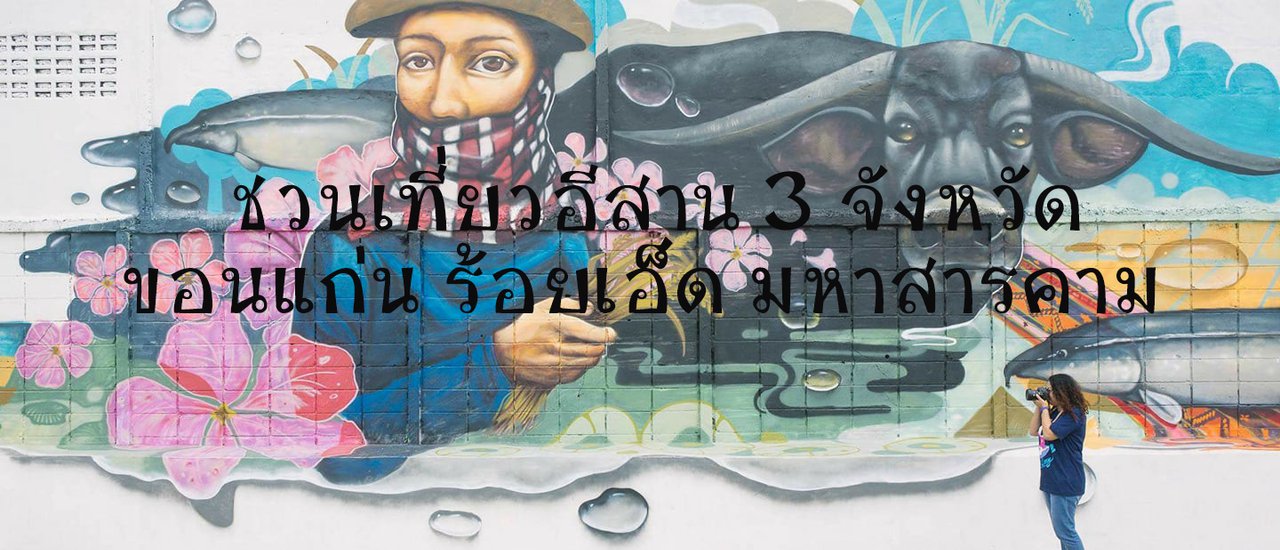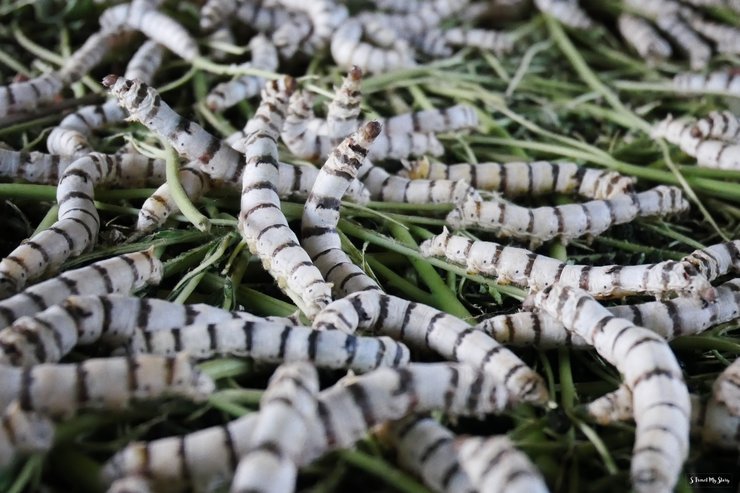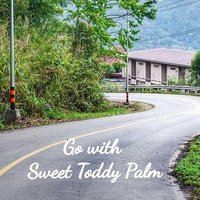Greetings! Last month (November 2017), I had the opportunity to work in the northeastern region of Thailand. This trip took me to the provinces of Khon Kaen, Roi Et, and Maha Sarakham. It was my first time visiting these three provinces. After my travels, I wanted to share with my friends some of the interesting tourist attractions I discovered. However, this is just a small selection of what these provinces have to offer.
Our journey begins in Khon Kaen Province.
In Nong Bua Village, Sok Nok Ten Subdistrict, Phon District, Khon Kaen Province, most members are engaged in silkworm farming and weaving.
If you are interested in textiles or local folklore, please feel free to contact me.















"Ancient silk fabric of Boonrasi 12 Isan traditions" refers to the ancient silk fabric patterns that Isan ladies of high social standing tie-dyed with patterns specific to the Boon Dan merit-making event. This cultural attire, consisting of a set of garments, was worn to the temple for making merit during the 12-month traditions of the Isan people.


History of "Ancient Silk of Boonrasi 12 Isan Customs"
This section details the history of the "Ancient Silk of Boonrasi 12 Isan Customs," a collection of silk fabrics representing the 12 customs of Isan, a region in Northeast Thailand. Each month is represented by a unique silk fabric with its own story and significance.
Month 1: Pi Mai (April)
The silk fabric for Pi Mai, the Isan New Year, symbolizes renewal and rebirth. It features vibrant colors and intricate patterns representing the cleansing rituals and festivities associated with the holiday.
Month 2: Songkran (April)
The Songkran silk fabric embodies the joyous water festival celebrated during this month. It showcases playful designs and water-inspired motifs, reflecting the tradition of splashing water for good luck and purification.
Month 3: Visakha Bucha (May)
Visakha Bucha, commemorating the birth, enlightenment, and death of Buddha, is represented by a serene silk fabric. The design incorporates Buddhist symbols and motifs, emphasizing the spiritual significance of the month.
Month 4: Asanha Bucha (July)
The Asanha Bucha silk fabric marks the beginning of Buddhist Lent. It features subdued colors and simple patterns, reflecting the introspective nature of the period dedicated to meditation and spiritual reflection.
Month 5: Khao Phansa (July)
Khao Phansa, the Buddhist Lent, is represented by a silk fabric with intricate designs and symbolic motifs. The patterns often depict monks and offerings, highlighting the importance of monastic life during this time.
Month 6: Wan Awk Phansa (October)
The Wan Awk Phansa silk fabric celebrates the end of Buddhist Lent. It features vibrant colors and celebratory motifs, reflecting the joy and festivities associated with the occasion.
Month 7: Ok Phansa (October)
Ok Phansa, the final day of Buddhist Lent, is represented by a silk fabric with symbolic designs and motifs. The patterns often depict offerings and rituals associated with the merit-making traditions of the day.
Month 8: Loy Krathong (November)
The Loy Krathong silk fabric embodies the festival of lights celebrated during this month. It features intricate designs and motifs inspired by the floating kratongs, symbolizing the release of negativity and wishes for good fortune.
Month 9: Makha Bucha (February)
Makha Bucha, commemorating the first gathering of Buddha's disciples, is represented by a serene silk fabric. The design incorporates Buddhist symbols and motifs, emphasizing the unity and harmony of the Sangha.
Month 10: Magha Puja (February)
The Magha Puja silk fabric celebrates the day Buddha ordained 1,250 disciples. It features intricate designs and motifs inspired by the monastic life and teachings of Buddha.
Month 11: Visakha Puja (May)
Visakha Puja, commemorating the birth, enlightenment, and death of Buddha, is represented by a serene silk fabric. The design incorporates Buddhist symbols and motifs, emphasizing the spiritual significance of the month.
Month 12: Asanha Puja (July)
The Asanha Puja silk fabric marks the beginning of Buddhist Lent. It features subdued colors and simple patterns, reflecting the introspective nature of the period dedicated to meditation and spiritual reflection.
This collection of silk fabrics not only showcases the beauty and craftsmanship of Isan silk weaving but also provides a glimpse into the rich cultural heritage and traditions of the region. Each month's fabric tells a unique story, reflecting the customs, beliefs, and values of the Isan people.














Let's continue with "Baan Khanom Baan Phattra".
Perfect for picking up souvenirs, sipping coffee, and enjoying delicious snacks.
The ambiance of the restaurant is pleasant, making it a great place to relax. The desserts are delicious.
Coordinates: Soi Mittraphap 4, Ban Phai Subdistrict, Ban Phai District, Khon Kaen 40110 Phone: 089 569 4394







Heading to "Roi Et Province".
If you're visiting Roi-Et and enjoy photography, don't miss Street Art Roi-Et! This trendy spot features street art on the walls of an old factory along a canal. Located near a new intersection opposite the walking street market, it has become a popular landmark and photo destination in Roi-Et.












The final destination of this trip is Maha Sarakham Province.
"Wat Pa Nong Chad" in Chiang Yuen District, Maha Sarakham Province
This temple boasts a stunning ubosot (ordination hall) that incorporates Khmer artistic elements. The highlight of this ubosot is its walls, which are adorned with tens of thousands of Phra Somdej amulets, earning it the nickname "Wihan Kot Muen Somdej" (Temple of Ten Thousand Somdejs). This unique feature makes it a must-visit destination for anyone visiting Maha Sarakham.












"Forest Monastery of Nong Son Village"
This temple is a popular place of worship, attracting many visitors. The abbot therefore decided to build this sim***, using a design from Laos. It is a Lanna-style sim, built from concrete and intricately patterned wood. Inside, a replica of the Phra Buddha Chinnarat is enshrined. This sim has unique features that are rarely seen in other temples, making it a worthwhile destination for visitors.
The term "Sim Isan" or "Isan Church" originates from the northeastern Thai dialect, where "Sim" refers to a Buddhist sanctuary or ordination hall.










"The Angel Children's Puppet Show Troupe" in Nong No Tai village, Phra That district, Na Dun district, Maha Sarakham province.
This is a "must-visit" place because it is home to the world's only "Krathip" puppet show. "Kru Siang" came up with the idea of making puppets from sticky rice baskets and woven materials from the community. These puppets are then used in a performance that combines puppetry with "Mo Lam" singing.
A diverse group of young people gathered, using "Krathip" puppets as a medium to invite young activists to join them. For over 8 years, children have been creating puppets using local handicrafts, namely "Krathip Khao Niao" or "Krong Khao," as the main material. They also use high-quality materials from the community, such as buffalo dung, to decorate the puppets, reflecting the unique identity of Isan's local wisdom. These puppets serve as a medium to present folk culture through "Mo Lam Klon" poetry, which is imbued with moral teachings.
Contact Teacher Xiang at 093-0835298 or 093-5219049.














And finally, on this trip.
"Black Ivory Coffee, Golden Elephant Coffee"
Black ivory coffee boasts a unique aroma and flavor profile, distinct from conventional coffee. This distinction stems from the beans' unique processing, which involves digestion within the stomachs of elephants. This process imparts a special fragrance and reduces bitterness, resulting in a smoother, less acidic cup. These characteristics contribute to black ivory coffee's exceptional aroma and exquisite taste.
Located at the Supradit Methee Buddhist Park, Na Kha Subdistrict, Wapi Pathum District, Maha Sarakham Province 44120.
Intention and purpose
"Venerable Luang Pu Kru Ba Thammuni" has been raising elephants for nearly 9 years to help and conserve all types of elephants in earnest. He aims to provide elephants with a good habitat, food, medicine, and care. He does not want elephants to work hard. The income after deducting expenses from the sale of elephant dung coffee, "Kaffee Chang Thongkham," will be used as a fund to help elephants throughout the system.
The production of civet coffee involves a complex process.
- The process begins with the selection of ripe, red Arabica coffee cherries from chemical-free farms in Doi Suan Ya Luang, Ban San Charoen, Tha Wang Pha District, Nan Province, at an altitude of 1,300-1,450 meters above sea level.
- The coffee cherries are then fed to elephants, who consume approximately 33 kilograms of cherries to produce 1 kilogram of coffee beans.
- Elephant handlers carefully monitor the elephants' digestive processes, waiting for the moment when the elephants excrete the coffee beans. The elephants' stomachs digest the skin and pulp of the coffee cherries but not the hard coffee beans.
- The elephant handlers then collect and dry the coffee beans, ensuring that this process does not interfere with the elephants' natural eating habits. The elephants eat the coffee cherries voluntarily.
- Once the coffee beans are collected, they undergo a meticulous production process to create the final product: Black Ivory Coffee.
- Black Ivory Coffee is now renowned worldwide and is the most expensive coffee in the world.

















In closing, we would like to express our sincere gratitude.
Tourism Authority of Thailand, Khon Kaen Office
This allows Sand to travel to the Northeast. See you again in the next review.
S Travel My Story
Friday, November 8, 2024 4:08 PM





















